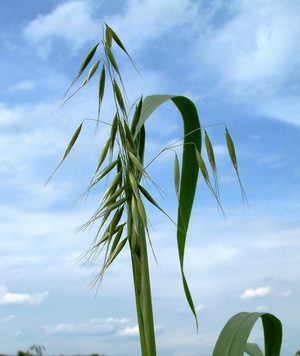Few readers of this blog will have heard of Nick Peters. Nick diligently (some might say over-diligently) researched the agro-ecology of wild oats. Most of what you understand about how wild oats tick is almost certainly based on Nick’s research. We had very effective wild oat herbicides by the time he had completed his work on the weed which may explain why not many are aware of his achievements.
Nick died very suddenly on New Year’s Eve. He was quiet and unassuming but had a terrific sense of humour. As indicated earlier, the care with which he did his experiments was legendry in weed research circles and there were sometimes unexpected and hilarious consequences to the extreme measures he took to get accurate results. If Nick said he had a good result, you knew it was an extremely well researched result. He also had a rather bizarre interest in plumbing and when attending conferences overseas, he regularly partially dismantled hotel bathrooms just to see how things worked.
It may be that Nick’s time for public recognition has yet to come. I say this because I am aware of a couple of instances where wild oats are now totally resistant to a very wide range of herbicides. It is frightening to witness the consequences in the fields in question and to try to think of a way of controlling them.
This is because wild oats have fewer weaknesses than blackgrass in terms of cultural control measures. The very common spring wild oat germinates both in the autumn and the spring. Typically around two-thirds of the plants in a winter-sown crop will emerge in the spring. So spring cropping is not really an effective cultural control method.
Likewise, its large seed means that ploughing does not have a significant effect on numbers. Perhaps its only weakness is that it stands proud of cereal crops unless spring-applied herbicides have stunted it. However, the multi-resistant plants do not seem to be even stunted by spring-applied herbicides! This visibility means that rogueing can be carried out but studies indicate that this operation is not as effective as surmised.
The only cereal herbicide that may reduce these multi-resistant populations may be tri-allate (Avadex). This needs checking. There is no recorded resistance in wild oats to isoproturon which may explain why the populations in the fields in question have recently got out of hand. I collected literally a bucketful of seed this summer. It took me ages to ensure that I did not take any seeds from the field in my socks and shoes (alright, I should have worn my wellies!). The collected seed will be tested so hopefully we will soon begin to know more about its resistance status.
The great comfort is that wild oats are typically self-pollinators and so tend to keep resistant genes ‘in the family’. This may explain why herbicide resistance in wild oats, first identified around 20 years ago in England, has not yet developed as a national problem like resistance in blackgrass.
There has also been a turn for the worse in the resistance status of another weed that fortunately does not occur in Northern Europe. Rigid ryegrass is a major weed in Australia and its resistance profile is alarming. When I visited in 2003, I was aware that in some fields the ryegrass was resistant to every selective herbicide in cereals and also to glyphosate. It was susceptible to paraquat and there was one farmer who was using precision guidance to inter-row spray his wheat crops with paraquat. The climate meant that he could sow his wheat in very wide rows with little loss of yield potential.
Unfortunately, it has recently been announced that resistance in rigid ryegrass to paraquat, as well as glyphosate, has been confirmed in a vineyard in Western Australia. Multi-applications a year, in the absence of cultivations, means that herbicide resistance often first occurs in vineyards and orchards. I suspect that this announcement has sent shudders down the backs of many Australian arable farmers.
Rigid ryegrass has one major weakness. Often more than 50% of the seed is still on the plant at cereal harvest. This has resulted in combine-mounted machines that can collect and crush the seed. In addition, the straw can be windrowed to ensure that there is sufficient to ensure a ‘hot’ burn to kill the seeds contained in it.
Keep an eye on wild oats and try to learn more about how they tick if populations are increasing. It is information generated by Nick Peters that will help enable the industry to keep a lid on the weed. Thanks Nick.
